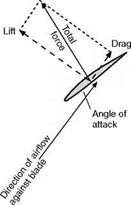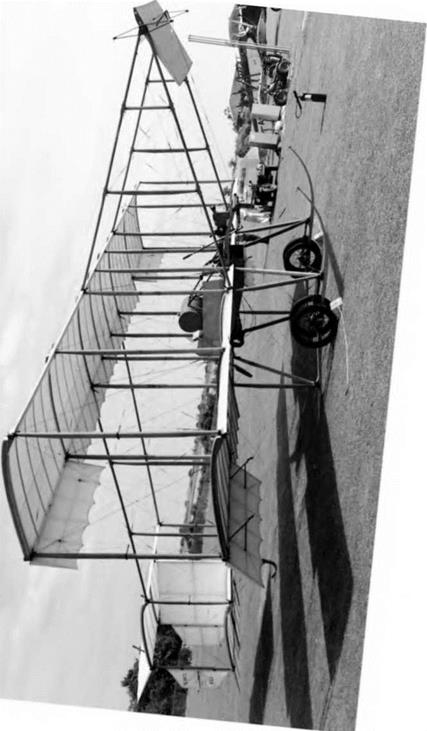Helix angle and blade angle
Why is the theory of the propeller more involved than that of the aerofoil? Chiefly because the local direction of motion of the blade is along a helix rather than a straight line, and, what is more, every section of the propeller blade travels on a different helix (Fig. 4.8, overleaf). The angle (<f>) between the resultant direction of the airflow and the plane of rotation (Fig. 4.6) is called the angle of advance or helix angle, and it is a different angle at each section of the blade. The sections near the tip move on a helix of much greater diameter, and they also move at a much greater velocity than those near the boss.
Since all the sections must be set at a small extra angle to give the angle of attack, and since for maximum efficiency this extra angle should be approximately the same at all parts of the blade, it is clear that the blade angle, or pitch angle, must vary like the helix angle from boss to tip. Figure 4.9 (later) shows a typical variation of blade angle.
 |
 |
The blade angle is best defined as the angle which the chord of the propeller section at any particular place makes with the horizontal plane when the pro-
Fig 4.6 Motion of a section of propeller blade Showing resolution of total force into lift and drag
Fig 4F Pusher – old type (opposite)
The Bristol Boxkite. One blade of the small pusher propeller can be seen protruding behind and below the minimal wooden box fuselage with its barrel-shaped fuel tank.
|
|
peller is laid flat on its boss on this horizontal plane, its axis being vertical (Fig. 4.10, overleaf). The figure shows how the blade angle is made up of the helix angle plus the angle of attack.












